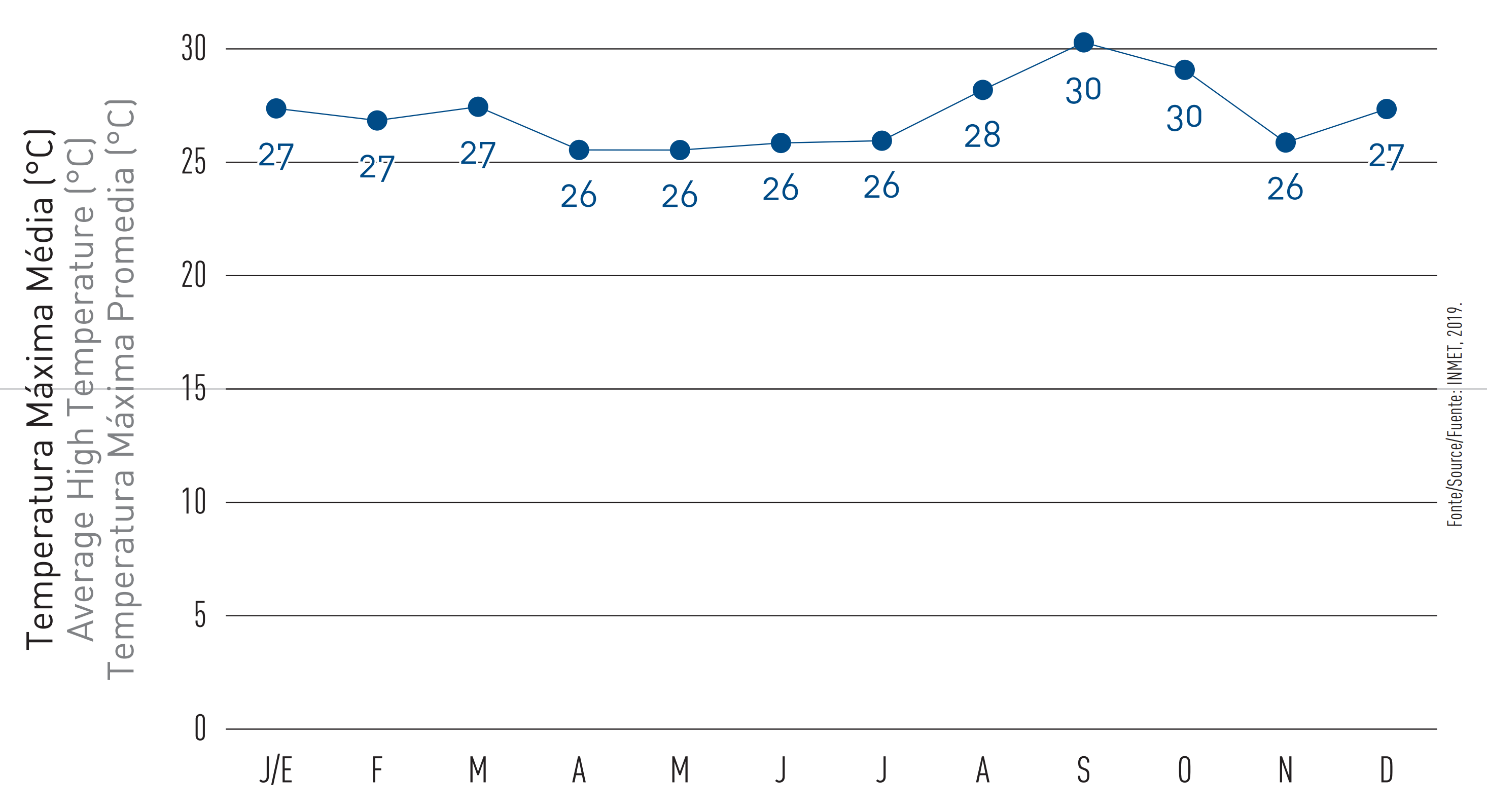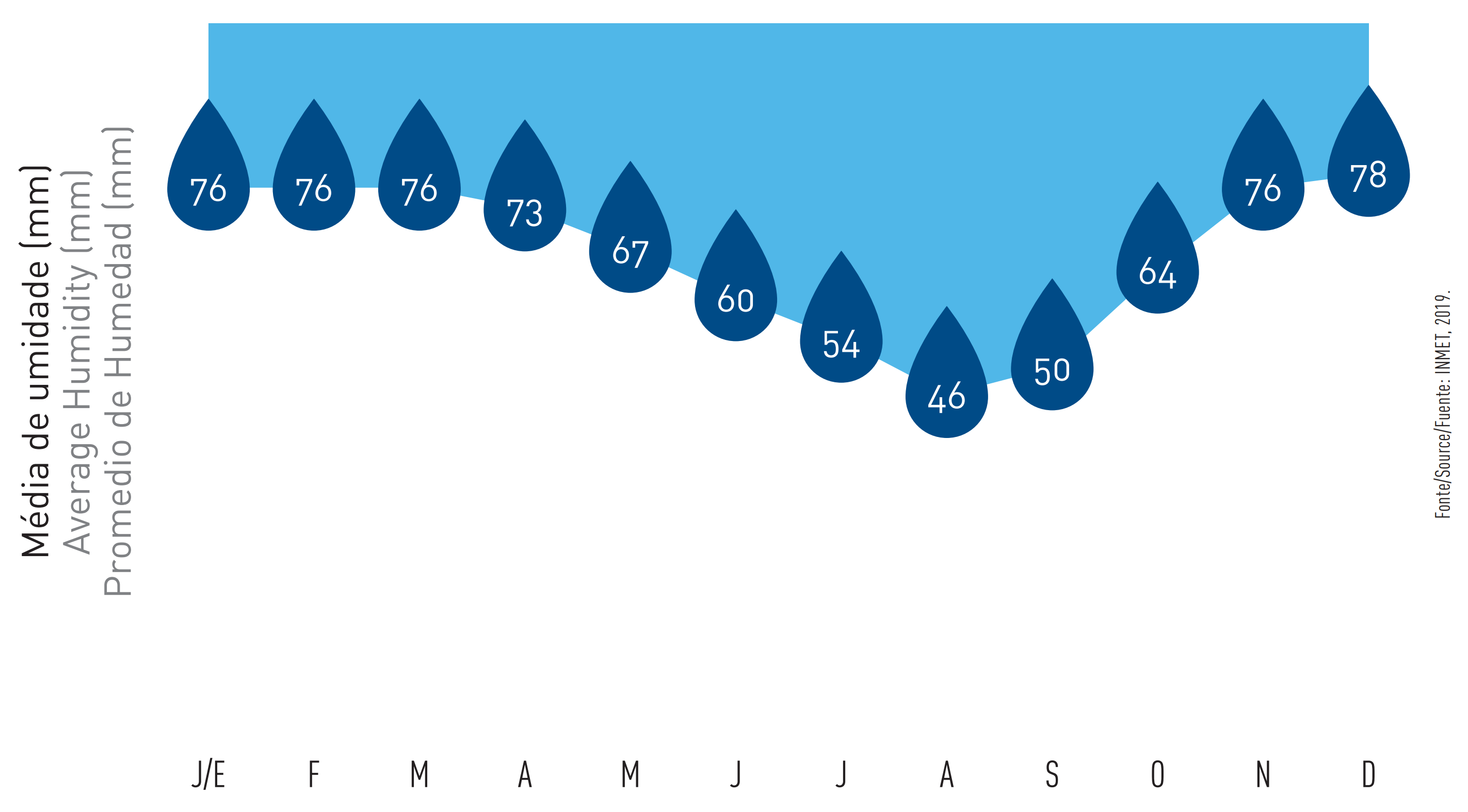2 - Environmental characteristics
2.6 – Climate
According to the Köppen climate classification, the climate in the Federal District is tropical, with a concentration of precipitation in the summer. The following climactic types can be seen:
- Tropical savannah climate with dry winter (Aw): The temperature, for the coldest month, is above 18°C. This is seen in areas with spot elevations below 1,000 meters.
- Humid subtropical climate with dry winter and hot summer (Cwa): The temperature for the coldest month is less than 18°C, with an average of above 22°C for the warmest month. This covers areas with spot elevations of between 1,000 and 1,200 meters.
- Humid subtropical climate with dry winter and temperate summer (Cwb): The temperature, for the coldest month, is less than 18°C, with an average of less than 22°C in the warmest month. This covers areas with spot elevations over 1,200 meters.
The average annual temperatures vary from between 19°C and 23°C. The warmest period occurs between September and October when the highest average historical temperatures have reached 30°C. The coldest period occurs between June and July, when the lowest temperatures fall to 13°C.
Figure 9 – Federal District climate classification according to Köppen




Rainfall is characterized by a marked seasonality, when approximately 90% of the precipitation occurs during the rainy season (September/October to March/ April), while during the dry season (April/May to September), rainfall is rarely more than 9.0 mm/month. The annual total varies between 1,000 and 1,600 mm. Air humidity varies regionally, and generally remains between 70 and 80% in the rainy period, dropping to averages of 45 to 65% in the dry season, when levels of less than 20% can occur.
Figure 14 – Média histórica de chuva acumulada no Distrito Federal